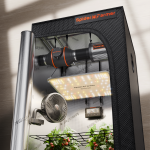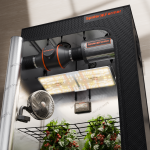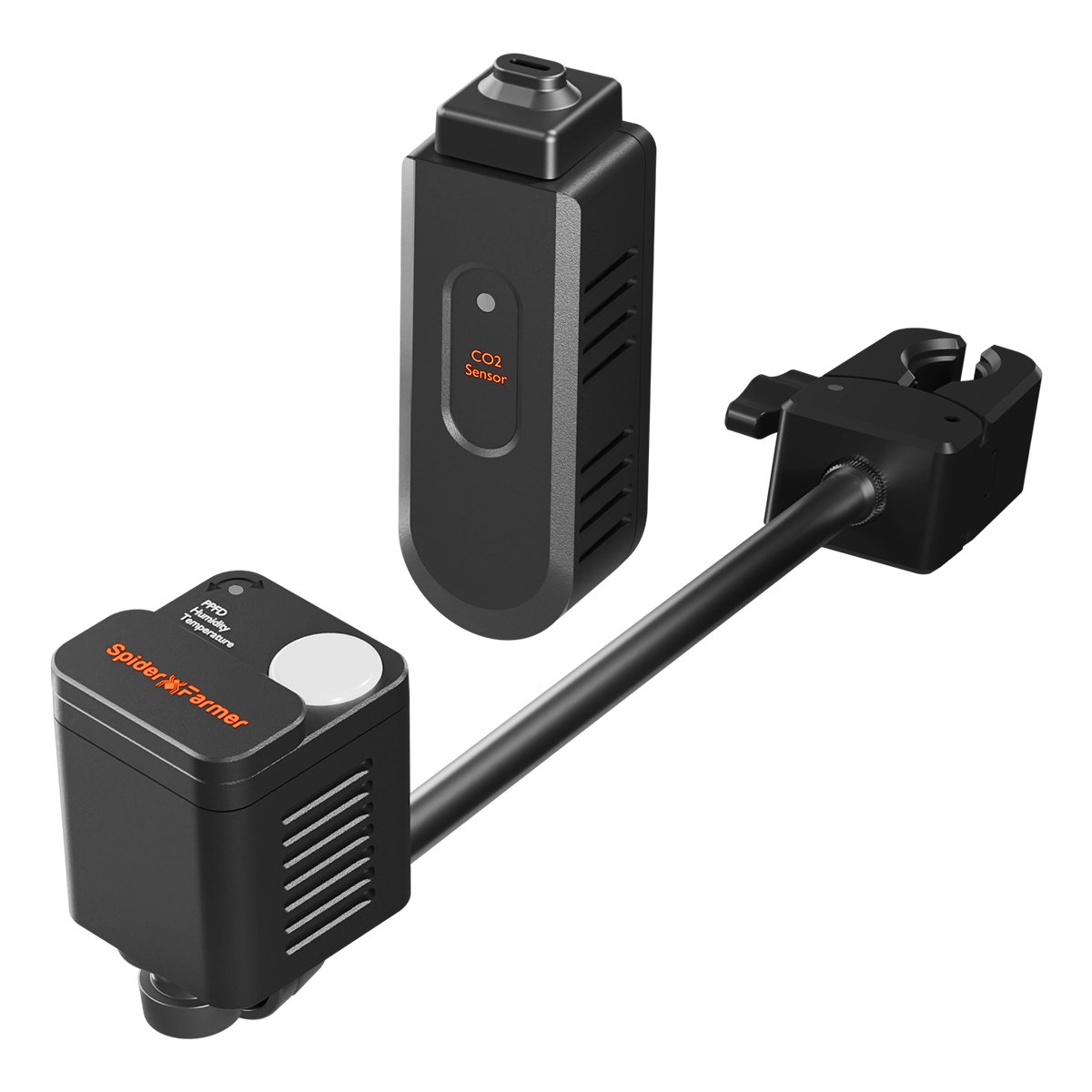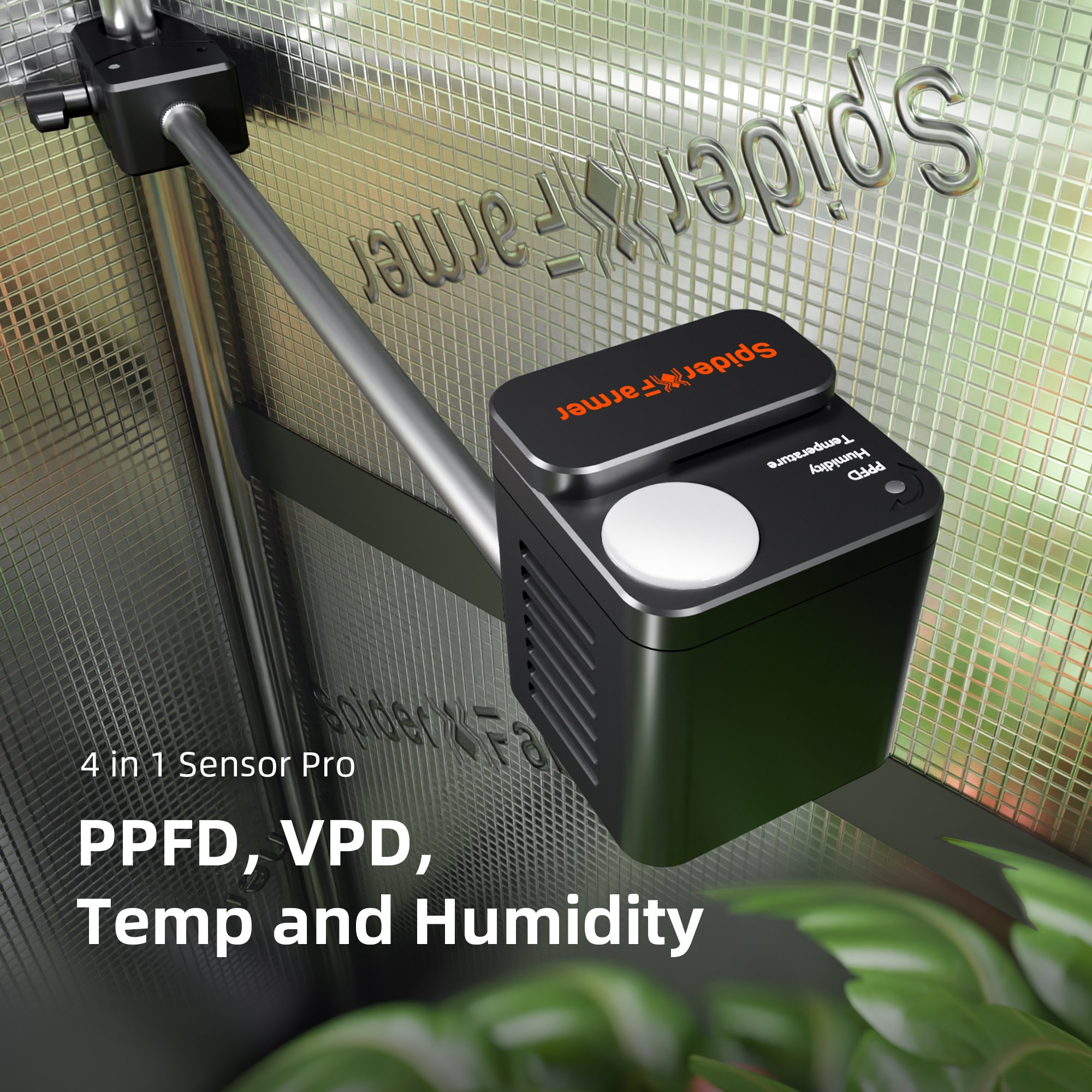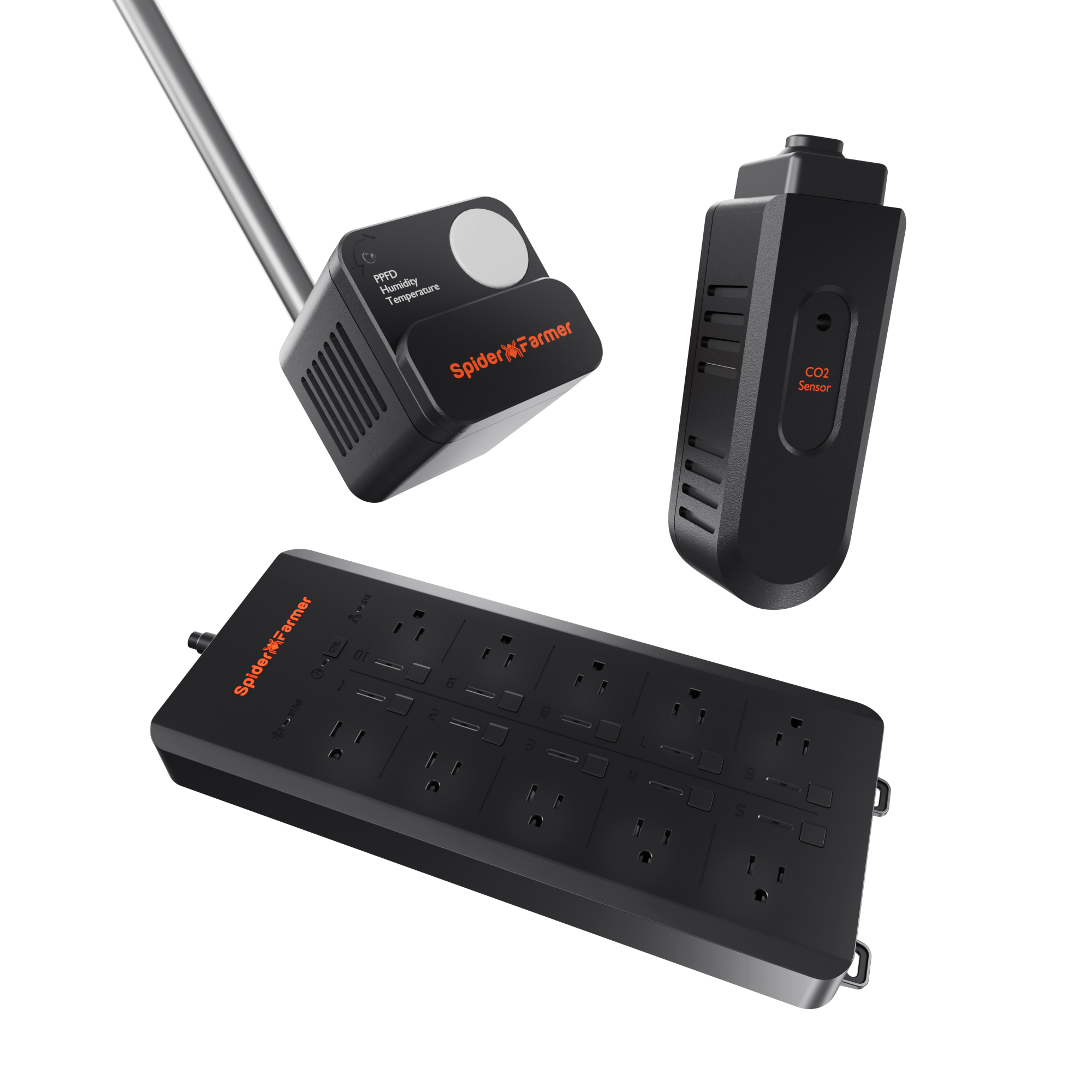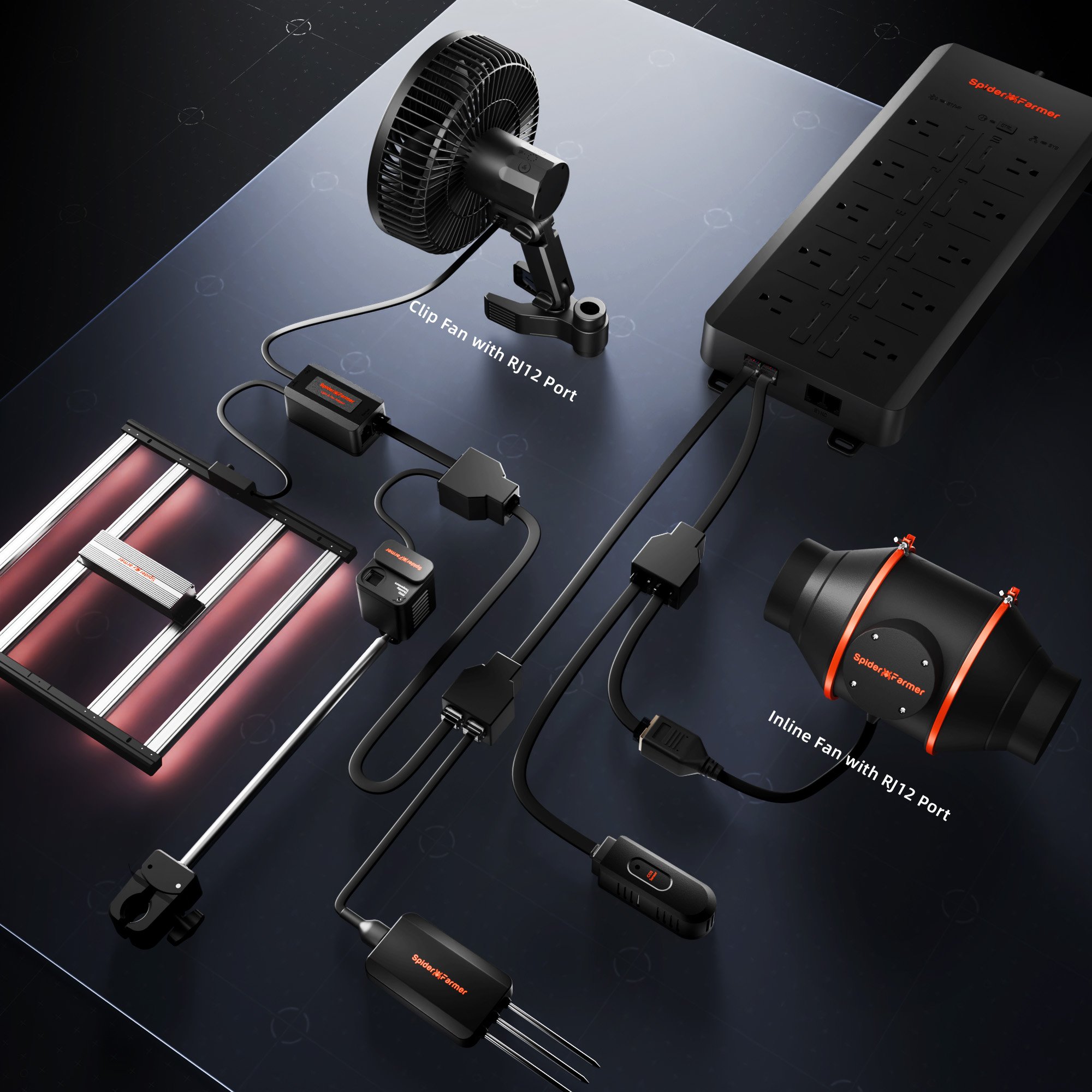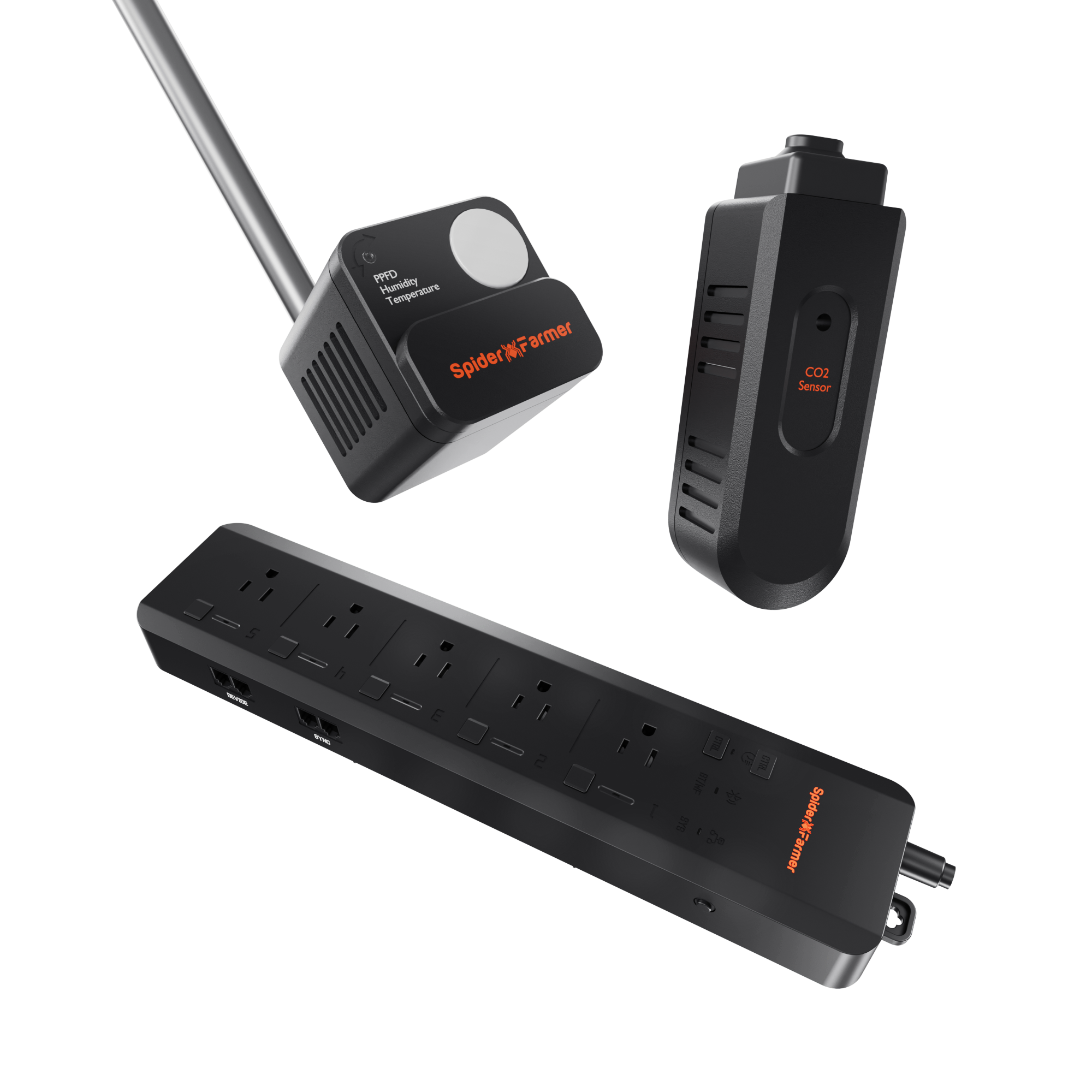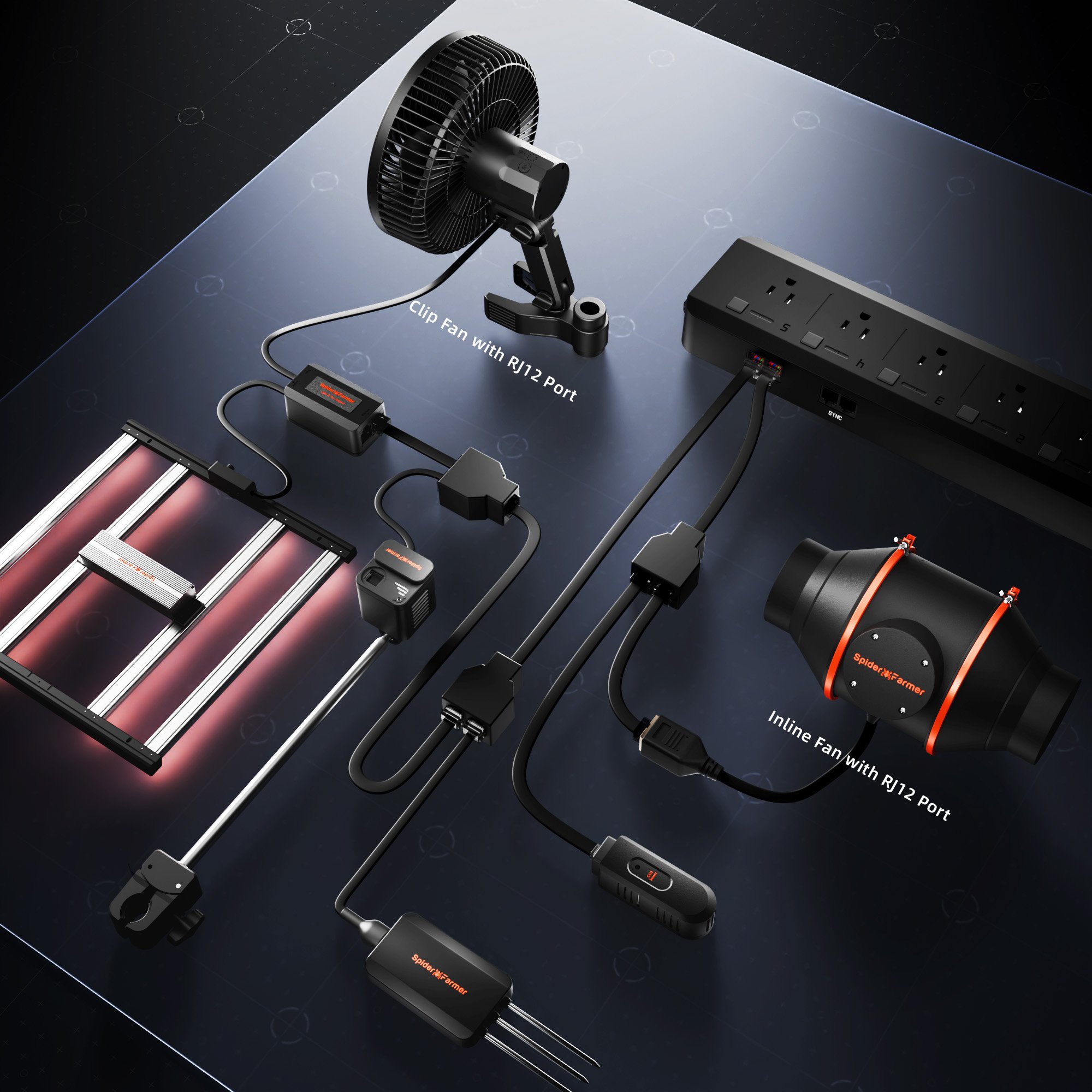Four Ways to Add CO₂ to Grow Tent, from Cheap to Premier
The right level of carbon dioxide (CO₂) is usually not something growers, particularly beginners, think about when cultivating indoors. However, if you are a pro who runs a significant grow space with high-PPFD grow lights, the idea of how to add CO₂ to grow tent might occur to you sometimes.
We are here for you. Read on to discover everything you need to know about CO₂ for grow tent, including how to add it, when to stop, and details about the most affordable methods for getting it done.
Table of Contents
Do I Need CO₂ Supplement for My Grow Tent
We all know plants rely on CO₂ for photosynthesis, the process by which they convert light into energy. However, when you try to achieve an increased crop yield and quality, is a CO₂ supplement necessary?
Scientifically speaking, research by Kyungdeok Noh and Byoung Ryong Jeong (2021) demonstrated that plants grown in CO₂-enriched conditions exhibited up to 156.9% higher fresh weight and improved root activity, chlorophyll content, and leaf size. These results highlight that elevated CO₂ levels can indeed enhance plant growth in controlled environments like grow tents, particularly when optimized with other factors such as light and ventilation.
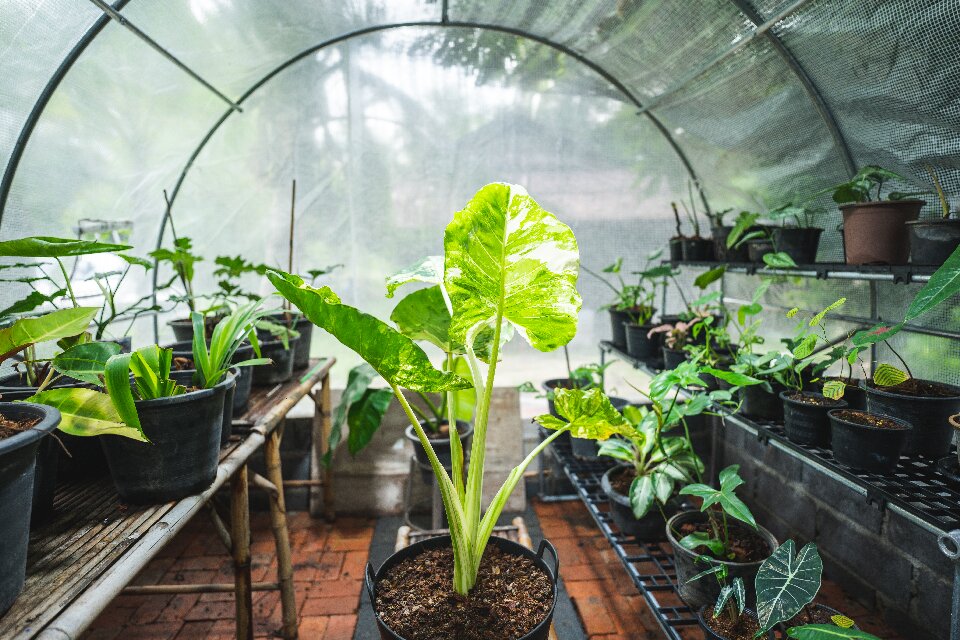
In real life, however, the practicality of CO₂ supplementation depends heavily on scale, setup, and cost-benefit balance. With ≤600W lighting, CO₂ supplementation offers minimal yield gains. That’s because ventilation systems (e.g., carbon filters) quickly remove added CO₂ in non-sealed tents, making sustained enrichment nearly impossible.
For operations with ≥3000W lighting and sealed environments, though, CO₂ supplementation can boost yields by ~20% (e.g., +20 oz per cycle) at a cost of $200–300 per cycle.
To sum up, CO₂ supplementation is not universally beneficial. It shines in large, sealed systems with strong lighting (≥1000 µmol·m⁻²·s⁻¹ PPFD) but is impractical for small grow tents, low-light setups, or non-sealed environments.
How to Add CO₂ to Your Grow Tent
There are several methods for introducing CO₂ into your grow tent. The method you choose will depend on your budget, the size of your grow space, and the stage of plant growth. Let’s start with the most budget- & beginner-friendly way.
1. Fermentation, Cheapest Homemade Way, Starting from $2
What is the cheapest way to add CO₂ to a grow tent? The fermentation method is the first one that comes to our mind. This DIY method involves using sugar, yeast, and water to create a fermentation process that produces CO₂. Here’s how to set up CO₂ in a grow tent:
- Mix warm sugar-water in a container (e.g., a bowl or bucket).
- Add activated yeast to initiate fermentation, which releases CO₂ as a byproduct.
- Place the container inside the grow tent.
- Seal the tent and turn off exhaust fans to retain CO₂.
- Refresh the solution every few days to 2 weeks by adding new sugar and warm water, as yeast activity diminishes over time.
Note: The mixture may bubble vigorously, so use a wide container to avoid spills.
Pros:
- Extremely affordable
- Easy to set up and maintain
Cons:
- Less consistent than other methods
- Needs to be replaced periodically
2. CO₂ Bags or Pads, Starting from $10
CO₂ bags or pads are another low-cost option that releases CO₂ into the air over time. These bags typically contain organic matter that slowly releases CO₂ when exposed to heat or moisture.
Pros:
- Inexpensive
- Low maintenance
Cons:
- Less control over CO₂ levels
- Not suitable for larger grow spaces
3. CO₂ Tanks/Gas Bottles, Starting from $30
This is so far the most popular and effective way to add CO₂ to your grow tent. Plus, it won’t make you bankrupt. This method involves using high-pressure cylinders that contain compressed CO₂ gas, which can be released into the tent to create an optimal environment for plant growth. CO₂ tanks typically come with a regulator that controls the amount of gas being released, ensuring a consistent supply for your plants.
Pros:
- Provides a steady, controlled supply of CO₂.
- Ideal for medium to large grow tents.
- Highly effective in increasing plant growth and yield.
Cons:
- Higher initial cost for the bottle, regulator, and refills.
- Requires ongoing maintenance and monitoring.
4. Gas Burners, Starting from $200
Gas burners are another popular method for generating CO₂ in a grow tent. This system works by burning a fuel source, such as propane or natural gas, to produce CO₂ as a byproduct. Gas burners are often used in really spacious grow operations as they can generate significant amounts of CO₂, making them suitable for larger spaces with more plants.
Pros:
- Produces large quantities of CO₂, suitable for larger grow spaces.
- Can be a cost-effective solution in the long run if the initial setup is affordable.
Cons:
- Higher initial setup cost due to the burner and fuel.
- Requires constant monitoring to ensure safe operation and optimal CO₂ levels.
- Potential fire hazard if not properly managed.
When to Stop Using CO₂ During Flowering
It’s generally recommended to stop using CO₂ enrichment during the late stages of flowering, typically about two weeks before harvest. This is because CO₂ can speed up flowering and lead to increased vegetative growth at the expense of flower development, potentially resulting in lower quality buds. Additionally, high CO₂ levels may affect the plant's ability to absorb other nutrients effectively during this crucial time. By reducing or ceasing CO₂ supplementation in the final weeks of flowering, growers can promote better flower ripening and enhance the overall quality and potency of the final product.
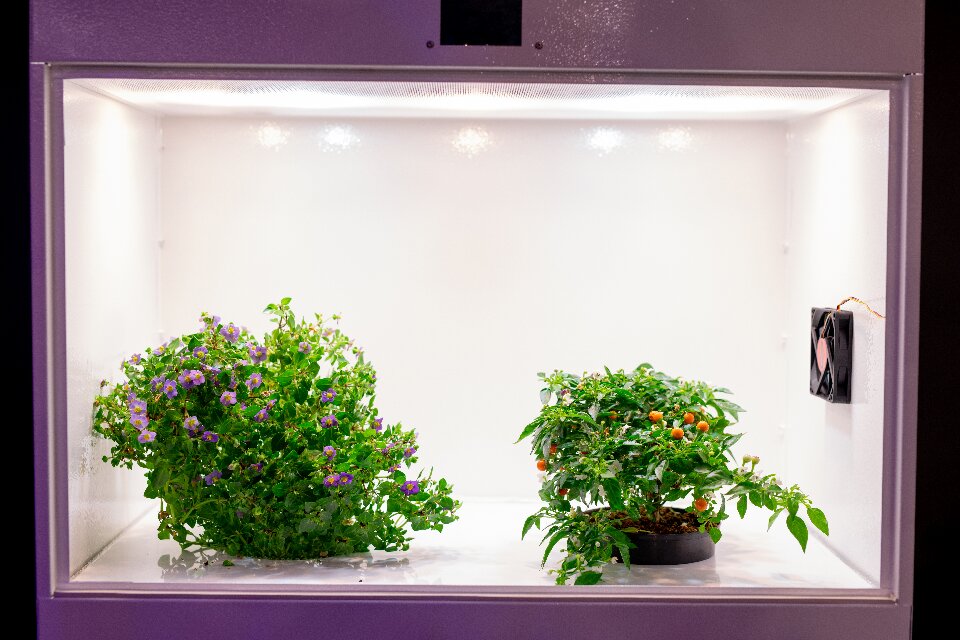
If you notice that your plants are continuing to grow too vigorously or are showing signs of stress, it may be time to reduce or stop CO₂ supplementation. For a more precise and effective approach, we recommend using a CO₂ sensor to monitor the immediate CO₂ level of your grow tent.
The Spider Farmer GGS Sensor Pro Kit is an excellent option for growers looking to maximize plant performance while keeping track of essential environmental parameters. The kit includes both a CO₂ sensor and a PPFD meter, offering a comprehensive solution for monitoring CO₂ levels and light intensity within your large grow tent.
2025 Spider Farmer Genius Grow System SensorPro Kits with CO2 Sensor and PAR Meter, Ideal for Optimizing Grow Tents, Grow Rooms
Precision Sensors for Optimal Plant Growth
Designed for growers seeking maximum growth performance, ideal for CO₂ supplementation and high PPFD lighting. Equipped with a Temperature & Humidity PPFD Sensor, which replaces the temperature and humidity light(day/night) sensor in GGS Controller Kits and AC5/AC10 Power Strip Kits.
CO₂ Sensor for Enhanced Growth Efficiency
Studies show that CO₂ supplementation can increase plant growth rates by 20-100% and boost crop yields by 20-30%. Combined with high PPFD lighting, CO₂ further enhances photosynthesis, leading to faster, healthier plant development.
PPFD Monitoring for Perfect Light Placement
New to growing and not sure how high to hang your lights? The Sensor Pro kit includes a 4-in-1 sensor that tracks temperature, humidity, VPD, and PPFD to help you find the right light placement and shows you real-time PPFD levels. It also supports PPFD dimming—just set your target PPFD, and the lights will automatically adjust brightness to deliver the ideal lighting for plant growth:
- Seedling Stage: 100-300
- Vegetative Stage: 400-600
- Flowering Stage: 800-1000
Designed for GGS Systems
Easily replaces the temperature and humidity light(day/night) sensor in GGS Controller Kits and AC5/AC10 Power Strip Kits for seamless integration and reliable performance.
Compatible Only with GGS Devices
Not compatible with controllers or accessories from other brands. Use exclusively with GGS systems for the best results.
GGS AC10 Smart Power Strip & SensorPro Climate Kits – 10 Outlets, Temp/Humidity/VPD Monitoring, CO2 Sensor, PAR Meter, 3-in-1 Soil Sensor (VWC, EC, Temp), WiFi & Bluetooth Connectivity
GGS AC10 Smart Power Strip – 10 Independent Outlets for Complete Control
The GGS AC10 smart power strip features 10 individually controlled outlets, allowing you to connect and manage grow lights, fans, heaters, humidifiers, and dehumidifiers. It supports precise speed control and oscillation settings for fans with RJ12 Port. For non-RJ12 fans and other environmental devices, control is managed by configuring the power socket they are plugged into.
By integrating a temperature & humidity sensor, devices plugged into the strip can be programmed to operate based on:
- Scheduled timers
- Temperature mode
- Humidity mode
- CO₂ mode
3-in-1 Soil Sensor – Precision Irrigation & Fertilization
This sensor provides real-time monitoring of key soil parameters:
- Soil Moisture (VWC) – Prevents overwatering or underwatering.
- Soil Temperature – Maintains healthy root conditions.
- Electrical Conductivity (EC) – Monitors nutrient levels to prevent over-fertilization.
Advanced Temperature, Humidity & PPFD Monitoring
- Temp & Humidity Monitoring – Tracks temperature, humidity to maintain an optimal growth environment.
- PPFD Monitoring – Measures light intensity to optimize grow light positioning.
- Seedling Stage: 100-300
- Vegetative Stage: 400-600
- Flowering Stage: 800-1000
CO₂ Sensor – Boost Growth Efficiency
CO₂ supplementation can increase plant growth rates by 20-100% and boost crop yields by 20-30%. Combined with high PPFD lighting, CO₂ enhances photosynthesis efficiency. With our CO₂ meter and CO₂ mode, you can maintain an ideal CO₂ concentration for optimal plant development.
Included Components:
1 x GGS AC10 Power Strip 1 x GGS CO₂ Meter 1 x GGS 4-in-1 Temp, Humidity, VPD, and PAR Meter 1 x GGS Temp, Humidity, VPD, and Light Meter 1 x GGS 3-in-1 Soil Sensor 1 x 2-in-1 Adapter – Used for connecting lights to the controller. 9 x 2.5m RJ12 Cables – For connecting various devices. 3 x 0.25m RJ12 Cables – For linking between telephone line splitters. 5 x RJ12 Telephone Line Splitters – Expands connection capacity for multiple devices. 6 x Hook and Loop Straps – Helps with cable management and organization.GGS AC5 Smart Power Strip & SensorPro Climate Kits – 5 Outlets, Temp/Humidity/VPD Monitoring, CO2 Sensor, PAR Meter, 3-in-1 Soil Sensor (VWC, EC, Temp), WiFi & Bluetooth Connectivity
GGS AC5 Smart Power Strip – 5 Independent Outlets for Complete Control
The GGS AC5 smart power strip features 5 individually controlled outlets, allowing you to connect and manage grow lights, fans, heaters, humidifiers, and dehumidifiers. It supports precise speed control and oscillation settings for fans with RJ12 Port. For non-RJ12 fans and other environmental devices, control is managed by configuring the power socket they are plugged into.
By integrating a temperature & humidity sensor, devices plugged into the strip can be programmed to operate based on:
- Scheduled timers
- Temperature mode
- Humidity mode
- CO₂ mode
3-in-1 Soil Sensor – Precision Irrigation & Fertilization
This sensor provides real-time monitoring of key soil parameters:
- Soil Moisture (VWC) – Prevents overwatering or underwatering.
- Soil Temperature – Maintains healthy root conditions.
- Electrical Conductivity (EC) – Monitors nutrient levels to prevent over-fertilization.
Advanced Temperature, Humidity & PPFD Monitoring
- Temp & Humidity Monitoring – Tracks temperature, humidity to maintain an optimal growth environment.
- PPFD Monitoring – Measures light intensity to optimize grow light positioning.
- Seedling Stage: 100-300
- Vegetative Stage: 400-600
- Flowering Stage: 800-1000
CO₂ Sensor – Boost Growth Efficiency
CO₂ supplementation can increase plant growth rates by 20-100% and boost crop yields by 20-30%. Combined with high PPFD lighting, CO₂ enhances photosynthesis efficiency. With our CO₂ meter and CO₂ mode, you can maintain an ideal CO₂ concentration for optimal plant development.
Included Components:
1 x GGS AC5 Power Strip 1 x GGS CO₂ Meter 1 x GGS 4-in-1 Temp, Humidity, VPD, and PAR Meter 1 x GGS Temp, Humidity, VPD, and Light Meter 1 x GGS 3-in-1 Soil Sensor 1 x 2-in-1 Adapter – Used for connecting lights to the controller. 9 x 2.5m RJ12 Cables – For connecting various devices. 3 x 0.25m RJ12 Cables – For linking between telephone line splitters. 5 x RJ12 Telephone Line Splitters – Expands connection capacity for multiple devices. 6 x Hook and Loop Straps – Helps with cable management and organization.Solved: How to Add CO₂ for Grow Tent
To add CO₂ to grow tent, the cheapest method of fermentation is definitely worth trying. In addition to that, this post offers 3 more effective ways to supplement CO₂ to your grow room. Regardless of which way you choose, remember to stop CO₂ supplementation during flowering to allow your plants to focus on producing flowers and fruit.


